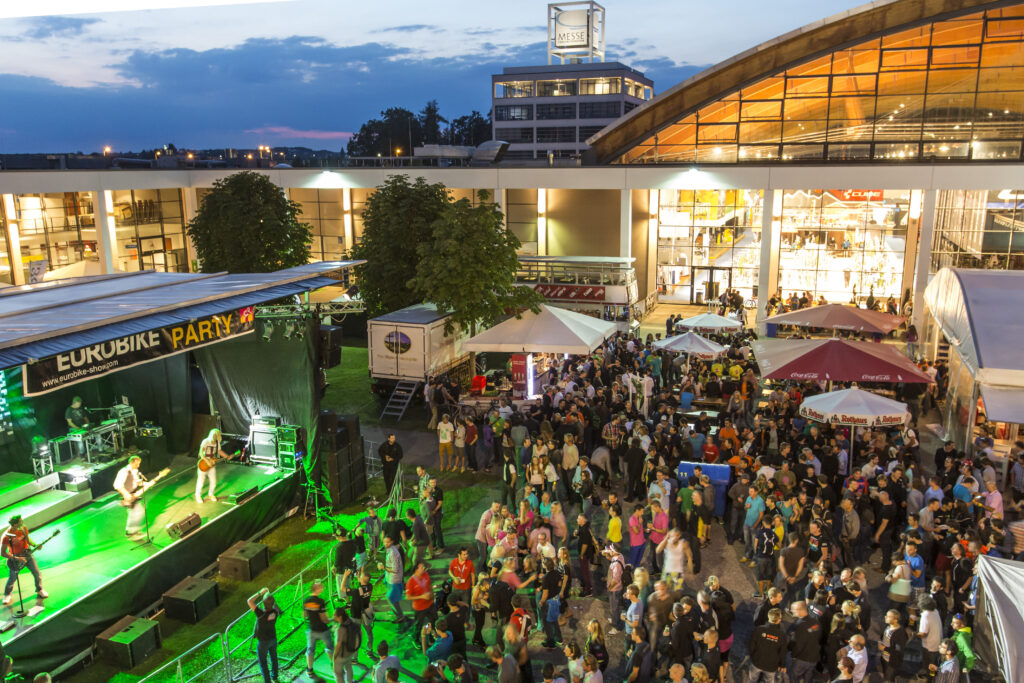Once a location and market has been established, there is the far-from-straightforward matter of exactly where an exhibition organiser is to stage its next event.
Of course the true level of choice varies greatly depending on the region. At one point in the not-so-distant past, a particular exhibition venue in Lagos, Nigeria, could lay claim to being the most expensive in the world at which to rent space. This was not as a result of the excellence of its facilities, nor its service levels, but was a direct consequence of that familiar real estate maxim, location, location, location. With so little viable space for trade show or convention space in West Africa, and an absence of competition, making money from events in Lagos meant going through this venue.
But if we could create an ideal location for our exhibitions, regardless of connection to a specific local market, where would that be?
For today’s time-starved delegates and attendees, it would probably be located at an airport. Buyers would save money on hotels and exhibitors would save money on transportation. Naturally, the airport would need to be a regional hub servicing all of the major carriers and benefiting from multiple connections.

It would also help if our fictional ideal airport was in a highly populous country that granted access to a large blossoming economy that enticed domestic buyers and exhibitors before even considering international attendees. But of course this isn’t crucial. Dubai has no real local industry to speak of, but as a major hub for the Middle East it ensures for itself a broad catchment of business events.
A strong regional reputation for tourism and high-quality service sector standards would be a plus. Cities such as Bangkok and Vienna lead the way in these respects.
We’ll need flexible shipping and customs laws that present as little an obstacle as possible to our exhibitors, and we need to afford them a broad selection of competitive logistics firms to choose from. On that note, union involvement in the US, where archaic and inflexible regulation and concepts such as drayage confounds even the brightest show directors and exhibitors, is a deterrent.
The same goes for shipping ourselves; we’d like accommodating visa regulations please. The less time we spend filling in forms during our lunch breaks the better.
We’d also like a national or regional government with a genuine understanding and appreciation of the benefits of a strong exhibition industry. This goodwill can manifest itself in many ways, be it through subsidies, subvention schemes or simply the establishment of well-supported regional and national bureaus able to complement our efforts with local promotion and information for organisers and exhibitors alike.
This pays dividends when it comes to taking our shows abroad. An active state department for trade and investment can make or break an international pavilion. As you’ll see later in this book, Germany, home to the state-owned Messe, demonstrates the clear advantage that a working partnership with the public sector brings.
A region that is home to a good number of ambitious small and medium-sized businesses in a competitive market will also help, as it is these companies that typically fill the bulk of exhibition stands.

Finally, there are the perks. A city known for its food, nightlife or scenery is considerably more appealing than one that is not. The exact location of the venue relative to cultural attractions also matters. I know many people who curse the trend of building venues miles out of town. If you’re leaving your office for a week to conduct business, you’re likely to swap your coffee for a drink in the city at some point, no easy matter when you may have to spend an hour or so simply getting into town.
However, you do not want to present attendees and delegates with too much opportunity for mischief, or to depart from the event’s own social calendar entirely, because much of the networking – an essential benefit of attending such events – is done over a beer, or sat together in front of the celebrated sights and experiences a city has to offer.
These trends in exhibition socialising are interesting, and continue to divide opinion in the industry.
Market squares were traditionally located in the centre of town, as was the infrastructure of civic and political administration. This has had some interesting consequences, especially for those regions which were formerly under Communist control.
In the aftermath of the Cold War, many of the cities in Eastern Europe constructed their exhibitions infrastructure well away from the sensitive corridors of power in the capital. While Prague, for example, is by some margin the Czech Republic’s destination of choice for visitors carrying both backpacks and briefcases, it is Brno, the country’s second largest city, that was conceived to house the country’s international events and visiting communities.
The reason for this is at least partly attributable to a residual fear of espionage. The arrival of tens, or hundreds, of thousands of visitors from around the world presents quite a challenge for civil servants and secret service agencies responsible for the observation and controlled transit of unknown persons. In the wake of the Cold War, a time of heightened fear and the presence of overseas counter-intelligence and secret service units in East European capitals, the need to control large numbers of overseas travellers was paramount.
In Tallinn, the capital of the former Soviet state Estonia, there exists a remarkable hotel formerly tasked with hosting delegates and international travellers for the express purpose of spying on them.
The Sokos Hotel Viru is now one of the largest conference hotels in the city, but as the natural home for business visitors to the city during the years of the Second World War and Cold War paranoia, it was also the hotel of choice for resident Soviet apparatchiks. Today, the hotel includes the enigmatic KGB Museum, essentially a single large room that showcases the sinister surveillance strategy of a police state; it has lain untouched since the last bug was (possibly) removed from guest suites.
Something else to consider in all this is the significant matter of logistics. Capital cities tend to be rather busy places even without the influx of thousands of visitors for a major exhibition. One notorious example will illustrate what can go wrong without adequate logistical planning.


Leave a Reply